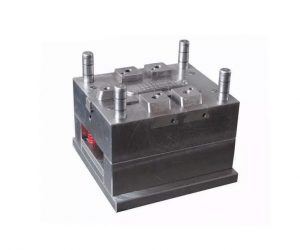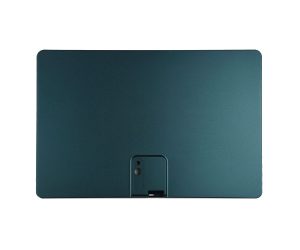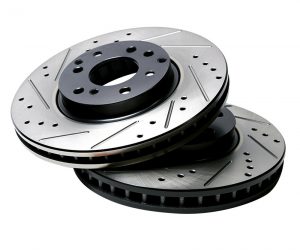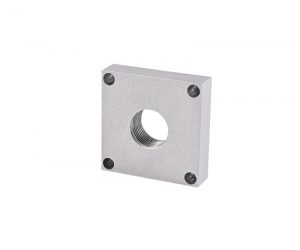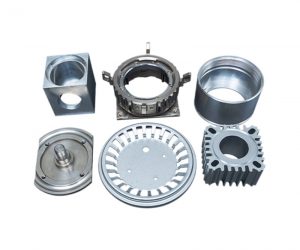In the mold design process, steps such as proofreading, drawing review, drawing tracking and printing are crucial. The purpose of these steps is to ensure the accuracy and completeness of the mold design documentation.
First, proofreading is an essential step. During this process, designers need to carefully check everything in the mold design document, including size, shape, material and other relevant parameters. Through proofreading, any possible errors or omissions can be found and corrected to ensure the accuracy of the design.
Secondly, drawing review is also an important link. During this process, designers need to carefully review the mold design drawings to ensure that they comply with relevant standards and specifications. This includes checking aspects such as drawing proportions, dimensions, symbols and annotations. Through drawing review, you can ensure that the design meets the requirements and can be smoothly translated into the actual manufacturing process.
Next, drawing tracing is also a critical step. During this process, designers need to track drawing versions of the mold design and record all modifications and updates. This helps keep design documents consistent and allows changes to be traced from version to version. Through drawing tracking, you can ensure that the design document is always consistent with the latest version and can reflect any possible modifications in a timely manner.
Finally, printing is the final step in the mold design process. During this process, designers need to print out design documents to facilitate communication with team members, customers, or other relevant personnel. Printed design documents can provide more intuitive visual effects and can help people better understand and evaluate the accuracy and completeness of the design.
To sum up, steps such as proofreading, drawing review, drawing tracking and printing play a vital role in the mold design process. Through these steps, the accuracy and completeness of mold design documents can be ensured, thereby improving the quality and efficiency of the design. Below is an outline of the typical process:
- Proofreading:
- After completing the mold design, the first step is proofreading the entire set of drawings, including part drawings, mold component drawings, and assembly drawings.
- Proofreading involves carefully checking for spelling errors, grammatical mistakes, and numerical inaccuracies in the dimensions and annotations.
- Verify that all the information in the drawings aligns with the design specifications and meets the requirements of the intended mold.
- Drawing Review:
- Once the proofreading is complete, the mold design team conducts a comprehensive drawing review.
- The drawing review involves multiple team members, including mold designers, engineers, and project managers, to ensure a thorough examination of the design.
- During the review, team members check for design errors, dimensional accuracy, and adherence to design standards and specifications.
- Any necessary modifications or improvements are identified and documented for implementation.
- Drawing Tracing:
- After completing the proofreading and drawing review, the finalized mold design drawings are traced or updated in the computer-aided design (CAD) software.
- The mold designers incorporate any changes or improvements identified during the review process into the CAD model of the mold.
- Drawing tracing ensures that the final design accurately reflects the reviewed and approved version.
- Printing of Mold Design:
- Once the drawing tracing is complete and the mold design is ready for production, the final step is printing the mold design documentation.
- The mold design package typically includes part drawings, assembly drawings, and detailed drawings of individual mold components.
- High-quality printing is essential to create clear and precise drawings for use during the mold manufacturing process.
- Depending on the complexity of the mold and the number of drawings, large format printers may be used to accommodate the size of the drawings.
- Document Control:
- Throughout the entire process, proper document control is essential to keep track of revisions, updates, and approvals.
- Each version of the mold design is typically assigned a unique version number and documented in a revision history log.
- All team members involved in the mold design process should have access to the most current and accurate version of the mold design documentation.
By following a systematic approach to proofreading, drawing review, drawing tracing, and printing, the mold design team ensures that the mold design documentation is error-free, meets all specifications, and serves as a reliable reference for the successful fabrication of the mold.
Proofreading, reviewing, tracing and printing
(1) Relationship between mould and its parts and plastic part drawings
Whether the material, hardness, dimensional accuracy and structure of the mold and mold parts meet the requirements of the plastic part drawing.
(2) Plastic parts
Whether the flow, shrinkage cavity, weld line, crack, and demoulding slope of plastic material flow affect the requirements for the use performance, dimensional accuracy, surface quality, etc. of plastic parts. Whether the pattern design is insufficient, whether the processing is simple, and whether the shrinkage of the molding material is selected correctly.
(3) Molding equipment
Whether the injection volume, injection pressure and clamping force are enough, whether there are problems in the mold installation, the south core and demoulding of plastic parts, and whether the nozzle of the injection machine is in correct contact with the mouthpiece.
(4) Mold structure
1) Whether the parting surface position and finish machining accuracy meet the requirements, whether there will be overflow, and whether the plastic parts can be kept at the side of the mold with ejector after opening the mold.
2) Whether the demoulding method is correct, whether the size, position and quantity of the extension rod and push tube are appropriate, whether the push plate will be stuck by the core, and whether the formed parts will be scratched.
3) Mold temperature regulation. Power and quantity of heater; Whether the location, size and quantity of the cooling medium flow line are appropriate.
4) How to deal with the side concave of plastic parts, and whether the mechanism for removing the side concave is appropriate, such as whether the slider and push rod in the inclined guide pillar core pulling mechanism interfere with each other.
5) Whether the position and size of the pouring and exhaust system are appropriate.
(5) Design drawings
1) Whether the placement positions of each mold part on the assembly drawing are appropriate, whether the representation is clear, and whether there is any omission
2) The part number and name on the part drawing, the manufacturing quantity, whether the parts are internally made or purchased, whether they are standard parts or non-standard parts, whether the parts' fitting processing accuracy, the correction processing and allowance of high-precision dimensions of molded plastic parts, and whether the materials, heat treatment, surface treatment, and surface finishing degree of mold parts are clearly marked and described.
3) Working dimensions and fitting dimensions of main parts and formed parts. The size figures should be correct and should not be converted by the manufacturer.
4) Check whether the view position and projection of all part drawings and general assembly drawings are correct, whether the drawing method conforms to the drawing national standard, and whether there are missing dimensions.
(6) Check machining performance
Whether the geometric structure, view drawing, dimension mark, etc. of all parts are conducive to processing
(7) Main working dimensions of recalculation aids
1) In principle, the professional proofreading shall be carried out according to the self proofreading project of the designer; However, it should focus on the structural principle, process performance and operation safety.
2) When drawing, first digest the figure, draw according to the national standard requirements, and fill in all dimensions and technical requirements. After tracing, proofread and sign.
3) The traced base drawing shall be submitted to the designer for proofreading and signature. It is customary for the relevant technicians of the tool manufacturer to review, countersign, check the manufacturing process, and then submit it to the sun.
(8) Prepare manufacturing process card
1) The technician of the tool manufacturer shall prepare the manufacturing process card and prepare for processing and manufacturing.
2) The inspection shall be strengthened in the manufacturing process of mold parts, and the inspection shall focus on the dimensional accuracy. After the mold assembly is completed, the inspector shall inspect it according to the mold inspection table, mainly to check whether the performance of mold parts is good. Only in this way can the manufacturing quality of the mold be guaranteed.
Mold design plays a crucial role in the mold processing cycle, directly impacting the quality and efficiency of the final product. To ensure the mold meets all required specifications, a series of essential steps must be followed: proofreading, drawing review, drawing tracing, and printing. In this article, we’ll explore each of these steps in detail, highlighting their importance in the mold design process.
Proofreading
The first step in mold design is proofreading the design to guarantee it aligns with the required specifications. This involves meticulously checking the design for accuracy—ensuring that all dimensions are correct and that it fulfills the customer's specific requirements. Think of proofreading as the mold’s first line of defense; it helps identify errors or inconsistencies that could impact the mold's functionality. By catching these issues early on, manufacturers can maintain high quality standards and avoid costly mistakes down the line.
Drawing Review
Once the design has been thoroughly proofread, the next crucial step is drawing review. This phase involves verifying that the design adheres to all relevant safety and regulatory standards, including industry-specific and government regulations. The drawing review process is vital for ensuring that the mold design is not only functional but also safe for use. It acts as a safeguard, confirming that all legal requirements are met, which is essential for protecting both the manufacturer and the end-user.
Drawing Tracing
Following the drawing review, we move on to drawing tracing. This step entails carefully tracing the design onto a template or specialized tracing paper. This meticulous process allows the mold manufacturer to create an accurate and detailed representation of the mold design, serving as a blueprint for the next stages of production. Imagine the precision needed here—this traced design will ultimately guide the entire manufacturing process, so every detail counts!
Printing
After the drawing has been traced, it’s time for printing. The design is printed onto specialized paper using a high-quality printer. This step is crucial because printing the design ensures that it is not only accurate but also clear and easy to read. In a field where precision is paramount, a well-printed design can make all the difference during the mold manufacturing process, reducing the likelihood of misunderstandings or errors.
Conclusion
In conclusion, the steps of proofreading, drawing review, drawing tracing, and printing are indispensable in the mold design process. Each phase plays a vital role in ensuring that the mold meets necessary specifications for accuracy, safety, and regulatory compliance. By taking the time to thoroughly review and verify the mold design, manufacturers can guarantee that the final product not only meets high-quality standards but also produces exceptional parts. Ultimately, this meticulous approach can save time, reduce costs, and enhance overall productivity—key factors in today’s competitive manufacturing landscape.
